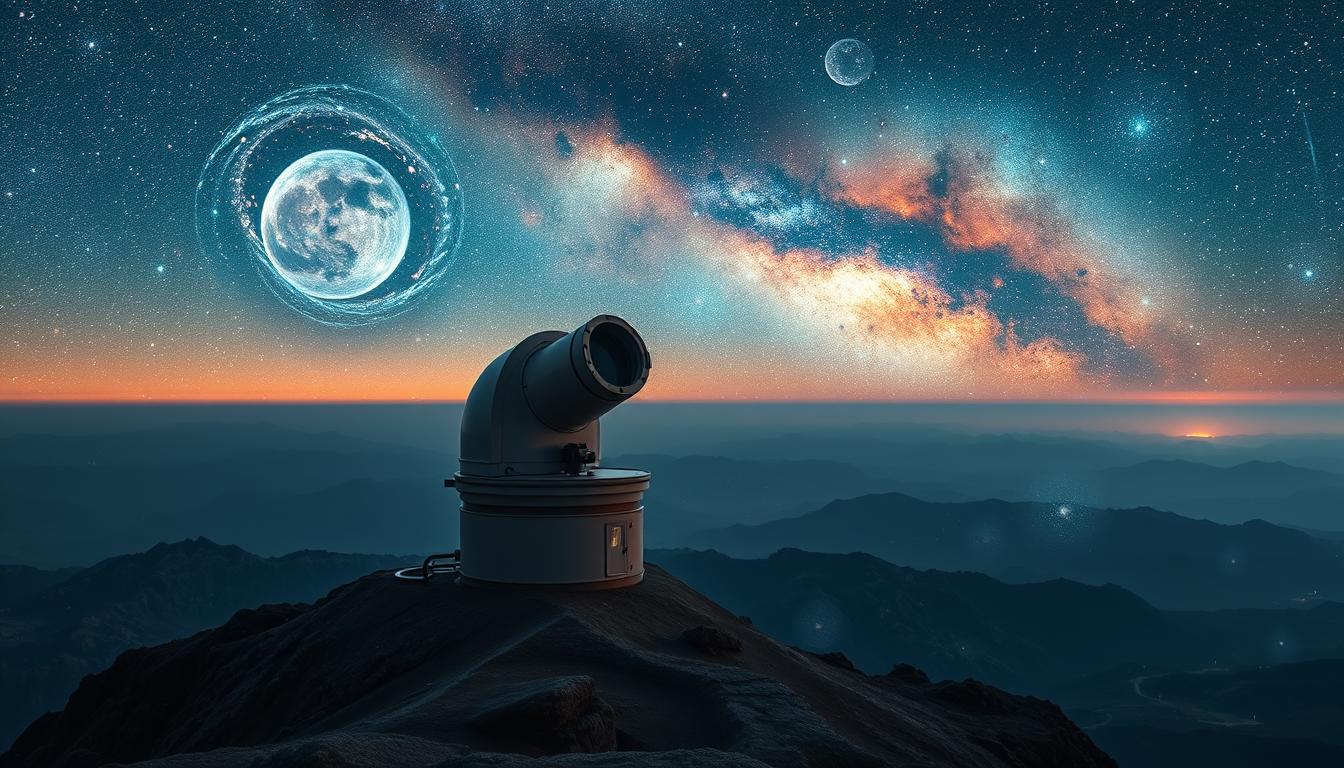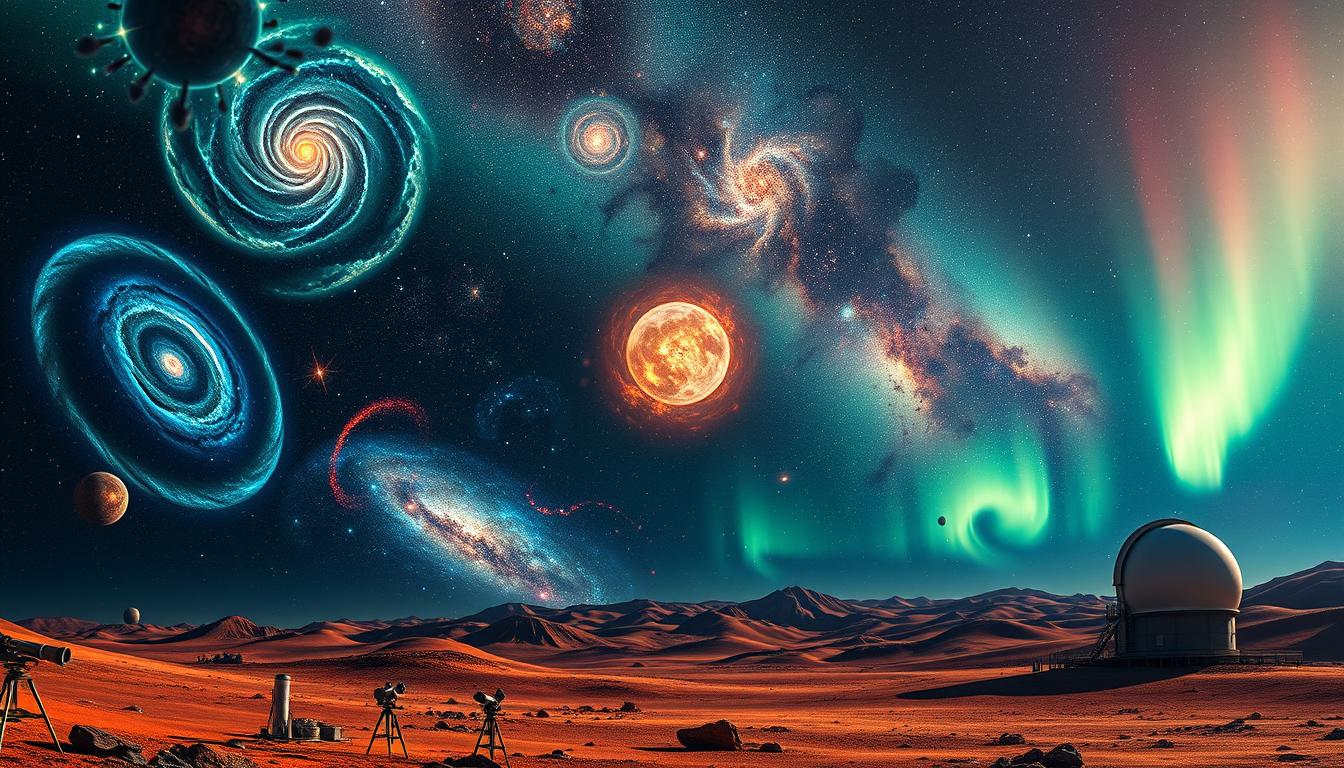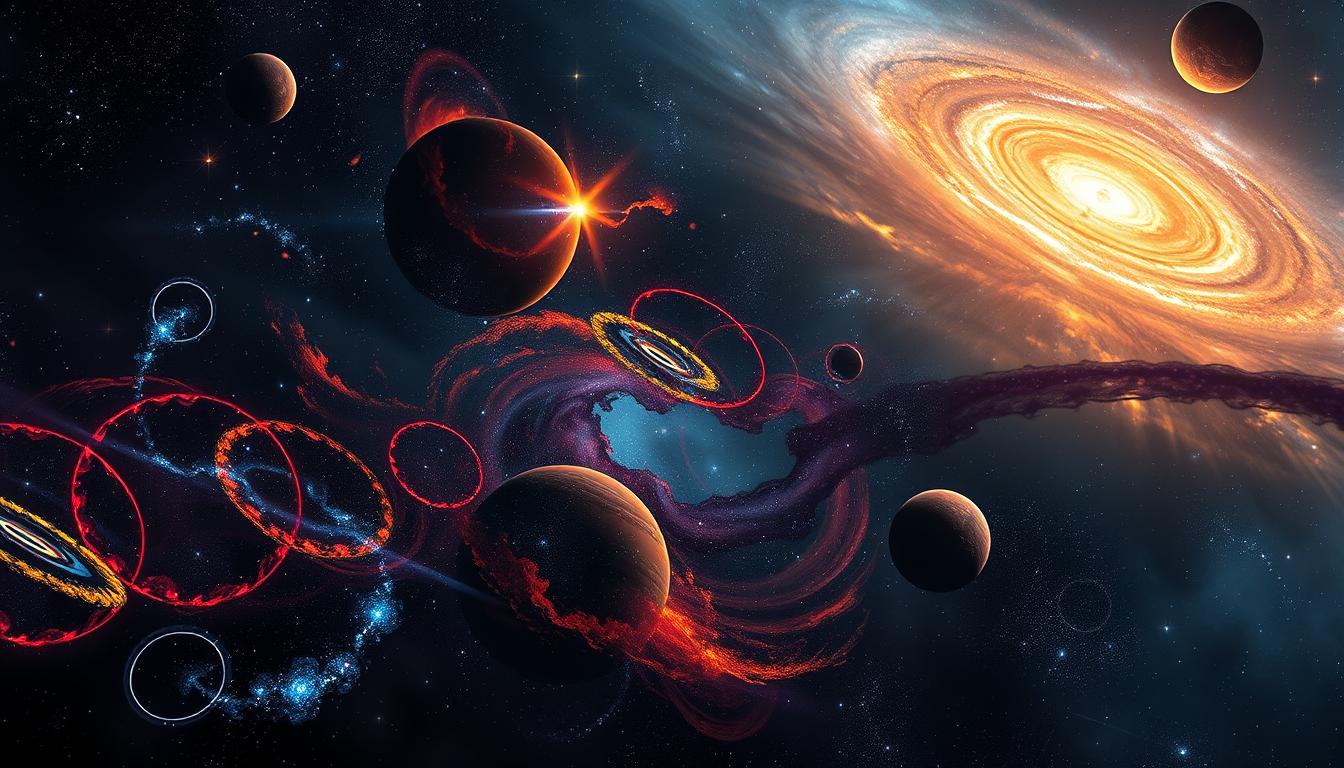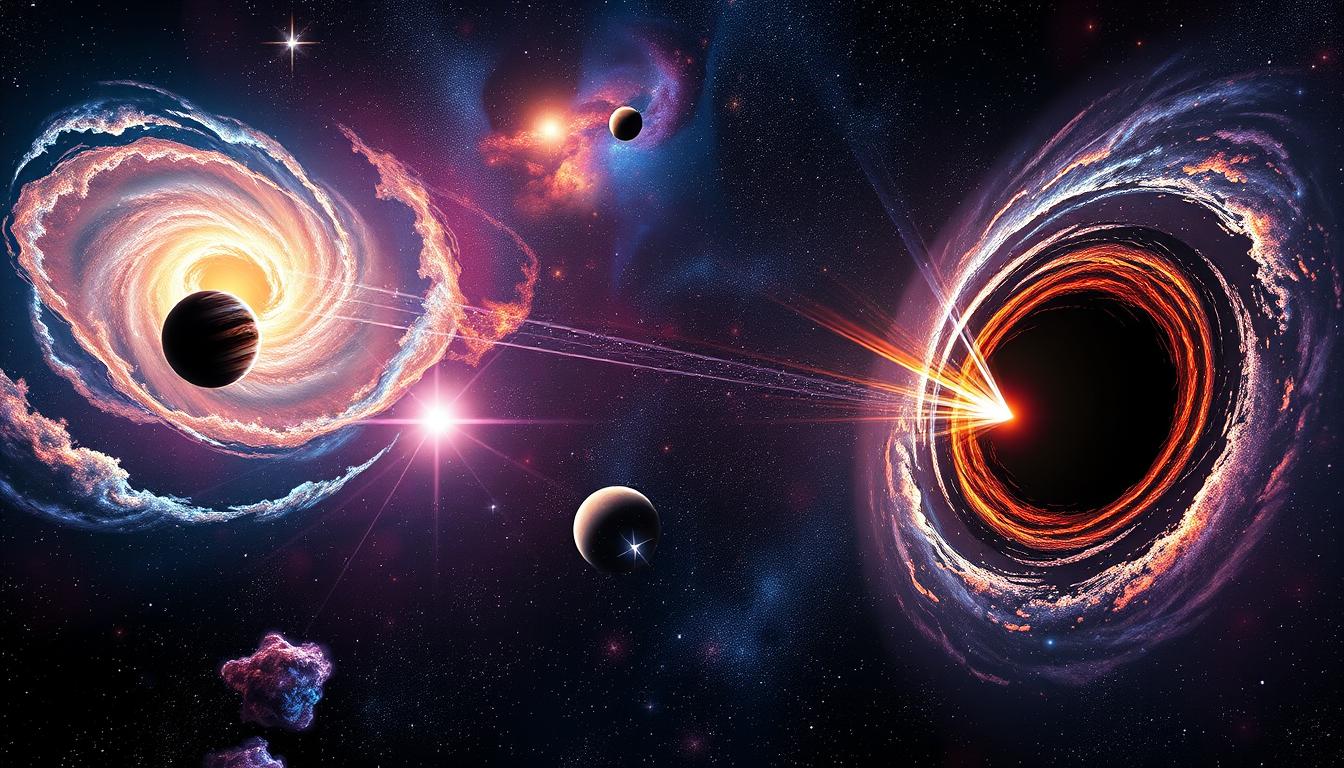
Earth is 4.54 billion years old, our Sun will potentially explode in 5 billion years once it runs out of hydrogen, and the Cosmic Microwave Background is the oldest light in the universe. We know all this and much more about the universe thanks to astrophysics. When you ask what is astrophysics, this is the answer. Astrophysics explores the universe deeply, using physics and chemistry to understand stars, planets, and galaxies.
Check this out, too: Astronomy vs Astrophysics: What’s the Difference?
Astronomers look to the sky to see what’s out there, and astrophysics makes sense of what we see. Astrophysics also impacts our world. From Isaac Newton’s gravity laws to Einstein’s groundbreaking theories, astrophysics has helped us move forward on Earth and understand our place in the universe. It compasses so much and helps with a lot of stuff, but what is astrophysics exactly?
Introduction to Astrophysics – What is Astrophysics?
Astrophysics explores the vast universe and tries to solve mysteries with the help of physics, maths, and formulas. Astrophysics covers a wide range, from tiny particles to huge galaxies. It investigates how stars are born, live, and die, how planets form, and how the universe changes over time. The biggest questions for astrophysics are about the universe, and they start from there to try to find answers. What started the universe? How do galaxies change over time? Is there life elsewhere in the universe?

Today, over 10,000 astrophysicists work around the world. Most, 55%, focus on observing the universe. Another 30% work on theories. This mix of observation and theory helps us learn more about space. The ones who work on theories are called theoretical astrophysicists, like theoretical physicists. They primarily work on what we don’t know and create appealing evidence to turn that into reality.
Mind-boggling scales: from subatomic particles to galaxies
The hard part about astrophysics is the range of sizes; it’s incredible. When we say light-years, it seems like a normal thing, but one 1 light-year takes 1 year if you travel at the speed of light. We will need 27 thousand years to travel with our current technology. For reference, the highest spaceship we build goes at 39,400 km/h. Light travels 300,000 kilometers per second. You get the reference.
To grasp the distances the astrophysicists are working on, our Sun is 8.3 light-minutes away, while Proxima Centauri is 4.3 light-years away. The universe is estimated to be 93 billion light-years wide. It’s enormous and extremely hard to understand, but they do.

Challenging our notions of time, space, and reality
One another thing about astrophysics is that it constantly challenges our understanding of reality, space, and time. The things we study in astrophysics are about how the universe works in the background of physics. Of course, since we can only grasp what we know here on Earth, the universe is a black box. That’s why it’s constantly changing our reality.
At Johns Hopkins University, they study dark matter and galaxy formation. At the University of Illinois, scientists look into cosmic catastrophes and galaxy evolution. They’re searching for the first galaxies in the universe. Can you imagine what kind of different things you need to get used to?
What is Astrophysics: Key Concepts and Areas of Study
Astrophysics looks into the universe’s mysteries, from star birth to galaxy evolution. It studies the structure of stars and galaxies and how the universe began. Scientists explore black holes, neutron stars, and supernovae to understand the cosmos better.
We use the existing physics and scientific methods but also need to use advanced technology. We use tools like the Hubble Space Telescope and Chandra X-ray Observatory, which have changed how we see the universe. The James Webb Telescope has also started to help us, but it’s early for now.
Innovations Driven by Astrophysical Research
Astrophysics has helped with many different things over the decades, and it’s been a focus. It helped create charge-coupled devices (CCDs) for taking pictures of space. Now, these devices are in our smartphones and medical tools. Techniques from studying the stars have also improved artificial intelligence. The AI hype we have, the basis for that technology, boils down to the study of stars in some way.
Applications in Medicine, Telecommunications, and Daily Life
Astrophysics has created a lot of use cases in different industries. They help shape our lives and even save lives. Particularly, astrophysics changed medicine a lot. Nuclear magnetic resonance, used for stars, led to MRI machines. The Center for Astrophysics is working on a new MRI for brain studies.
In telecommunications, research from astrophysics helped make wireless internet better. Car safety has also gotten better thanks to software from space studies. The Parker Solar Probe, made by astrophysicists, is learning about the solar wind. This helps with satellite communications and GPS. Astrophysics also brings us energy-efficient solar panels and airport scanners.

The Discoveries Astrophysics Helped With
Astrophysics has helped with what we are using here on Earth, but it has also helped shape our understanding of the universe’s history. Astrophysics was there, from the Big Bang Theory to the discovery of dark matter. I want to briefly introduce the discoveries astrophysics helped with about the history and origin of our universe.
The Big Bang Theory and the Origin of the Universe
The Big Bang theory is the idea that our universe began as a super hot and dense point and then grew – which is inflation – exponentially. It tells us how our universe began about 13.8 billion years ago. The universe’s story began with a fast expansion called cosmic inflation. This quick event set the stage for the creation of basic particles. These particles then came together to form atoms, stars, and galaxies.
Many important findings support the Big Bang theory and astrophysics mostly works on finding these proofs. The cosmic microwave background radiation, found in 1964, shows us the early universe. This faint glow is even across the sky, just like the theory predicted.
Another strong evidence is the amount of light elements in the universe. The amount of hydrogen and helium we see today matches what the Big Bang theory says. Also, the way galaxies are moving away from each other shows the universe is still getting bigger.
Dark Matter and Dark Energy: The Universe’s Biggest Mysteries
There is a mysterious matter that we know exists, which makes up 96% of the universe. We call this dark matter. Dark matter doesn’t interact with anything, and you can’t see it. We know it by astrophysical calculations and theories. Lisa Randall says that “dark matter” is the wrong name for this. Mostly because it’s not dark. It just doesn’t emit anything. Black holes are also black, for example, but they are visible and interact with stuff.
Dark matter is about 27% of the universe and doesn’t interact with light. It’s vital to know how galaxies form and their structure. Dark energy, making up 68% of the universe’s energy, is thought to be speeding up the universe’s expansion.
Dark Matter and Antimatter are different things!
Scientists study these invisible parts using different methods. Gravitational lensing shows the mass in galaxy clusters. Type Ia supernovas help measure the universe’s expansion rate. The Bullet Cluster shows strong proof of dark matter, with most mass around galaxies, not in the center.
Exoplanets and the Search for Extraterrestrial Life
Exoplanets are planets that we find in the universe apart from the Earth. It has a lot of questions, but it also helps us understand a lot of things. Astrophysics research has grown a lot with the finding of exoplanets. These planets go around stars outside our solar system. They could hold life beyond Earth. The Kepler Space Telescope has changed the game, finding over 4,500 exoplanet candidates since 2009.
Looking for Earth-like planets is a big deal in astrophysics. Scientists have found at least 70 Earth-sized exoplanets. Of these, 48 could have liquid water, which is key for life. This has changed how we see planets and their chance of having life.
Exoplanets come in many sizes. Some are as small as Earth, while others are much bigger. Kepler-9b is one of the smallest, only 1.5 times bigger than Earth. On the other end, the hottest exoplanet has a surface temperature of about 3,700 degrees Fahrenheit.
Conclusion
Astrophysics is the study of the universe with using science, physics, and math. It helps us make sense of the world and not just look at it like astronomy does. That is the difference between astronomy and astrophysics – astrophysics goes deeper than what we see. The question “what is astrophysics” is basically this, it’s the study of the universe with physics and science.
This field covers many areas like radio, infrared, and optical astronomy. Each area gives us new insights. We learn about everything from electromagnetic radiation to the powerful processes of black holes. We understand how the universe works, the universe’s structure, how it came to be, and other things.
FAQ
What is astrophysics?
Astrophysics is a branch of science that looks into the universe’s physics and chemistry. It explores the universe’s origins, black holes, dark matter, and life beyond Earth.
What are some key topics and areas of study in astrophysics?
Key topics in astrophysics include stellar evolution, galaxy structure, and cosmology. It also covers high-energy astrophysics, planetary science, and the search for life beyond Earth.
What is the Big Bang theory?
The Big Bang theory explains the universe’s origin. It says the universe started about 13.8 billion years ago as a hot, dense state. It has been expanding ever since. This theory is backed by evidence like cosmic microwave background radiation and the abundance of light elements. It also matches the expansion of galaxies. Astrophysics helped discover all this.
What are some celestial bodies and structures studied in astrophysics?
Astrophysics looks at stars, galaxies, planets, moons, asteroids, and more. It also studies black holes, neutron stars, and supernovae.
What are dark matter and dark energy?
Dark matter and dark energy are mysteries in astrophysics. It doesn’t give off or absorb light but helps form galaxies. Dark energy makes the universe expand faster.
How has astrophysics contributed to technological advancements?
Astrophysics has contributed to medical imaging, the internet, digital cameras, solar panels, computers, satellites, and GPS.